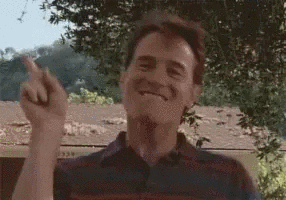This is what all printing should become in the future. I will suggest though, that it's only necessary to go nonplanar for the "show" surface rather than the entire print job.
https://tams.informatik.uni-hamburg.de/research/3d-printing/nonplanar_printing/
I hope Prusa Slicer gets this integrated. Does anyone know if the Prusa devs are on this forum?
I'm more of a cura guy 
Let's hope every slicer gets this feature 
I might have to switch slicers, to be honest. This is a game-changer to me. (And yeah, I'm a Cura guy at the moment.)
What does this mean, though, to realtime statistics like "current layer", pauseAtZ, OctoLapse? This is starting to almost look like those 5-axis CNC machines, to be honest.
It means I have some coding to do  I'm not sure exactly how this works at the moment, but I'll have to take great care to make sure the extruder doesn't hit the print. A fast work-around would be to z-lift up to the highest extrusion point + the lift height for every snapshot. That would be pretty simple to implement, so I might go ahead and add that preemptively.
I'm not sure exactly how this works at the moment, but I'll have to take great care to make sure the extruder doesn't hit the print. A fast work-around would be to z-lift up to the highest extrusion point + the lift height for every snapshot. That would be pretty simple to implement, so I might go ahead and add that preemptively.
Also, what exactly do layers even mean at this point? Not the same thing as before, that's for sure. I'll need to download this and try it out before it becomes the standard. Honestly it's giving me nightmares, lol! That being said, how cool is this? It's something we've all thought about, but these geniuses went and did it! I'm very happy for them and the rest of the community who will benefit from this.
Are we going to see needle like nozzles now and maybe another axis or two in the future? Probably imho.
Yeah, it's real cool @FormerLurker. I haven't played with it yet, but I vaguely remember a video a while back that was similar in nature with a vase mode print. It would print in vase mode but not along a consecutive axis change, allowing for prints with multiple colors and wave like stripes in the vase. Maybe this is an evolution of that.
If you knew the highest z-point in the entire file then a safe bet would be to lift to the highwater mark + 5mm then park it (yeah). A G1 with all three axes at the firmware side could take a linear path or a 3D curve to get there. So for safety's sake, I always lift up, home, X/Y-return, descend as a strategy.
I always know the highest extrusion point (it's how I track layer changes), as well as the current position, so no need to home. Here is what I will do:
- Is the current Z position below the highest extrusion z coordinate? If so, lift to that height.
- Do the retract/lift/move/snapshot/return to XY as Octolapse always does.
- If we are higher than the previous Z coordinate (before Octolapse takes over), drop to that height.
- Deretract if necessary, send any end commands and continue printing.
Really it's step 1 and 3 that are different. I could also try to not even bother initiating snapshots when the current Z is not at or above the highest extrusion point. I'll probably wait and see if anyone starts using that slicer before I do anything more fancy than I've mentioned. If it's necessary to raise the extruder at all, that will REALLY add a lot of time/oozing though, so I'll consider other options too.
Honestly, this new approach is going to affect the part cooling fan. The surface under it is no longer a smooth playing field; it's topologically-interesting.
It does look like the hotend is constantly moving and it seems to be at a smoother rate. It reminds me of the infill algorithm for Cura that I often used (Cubic). Speaking of which, I didn't see any infill there on the demo video. 
